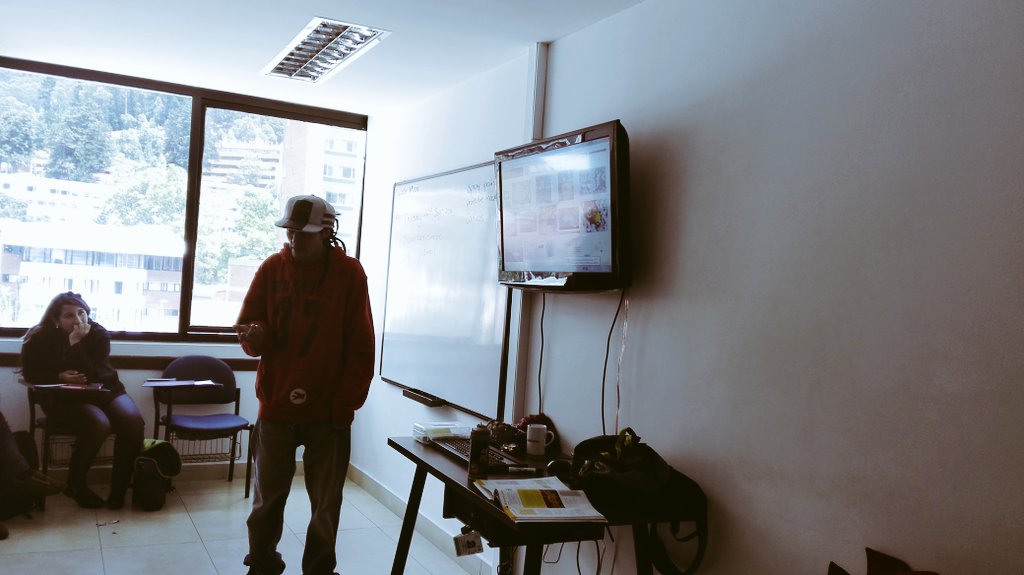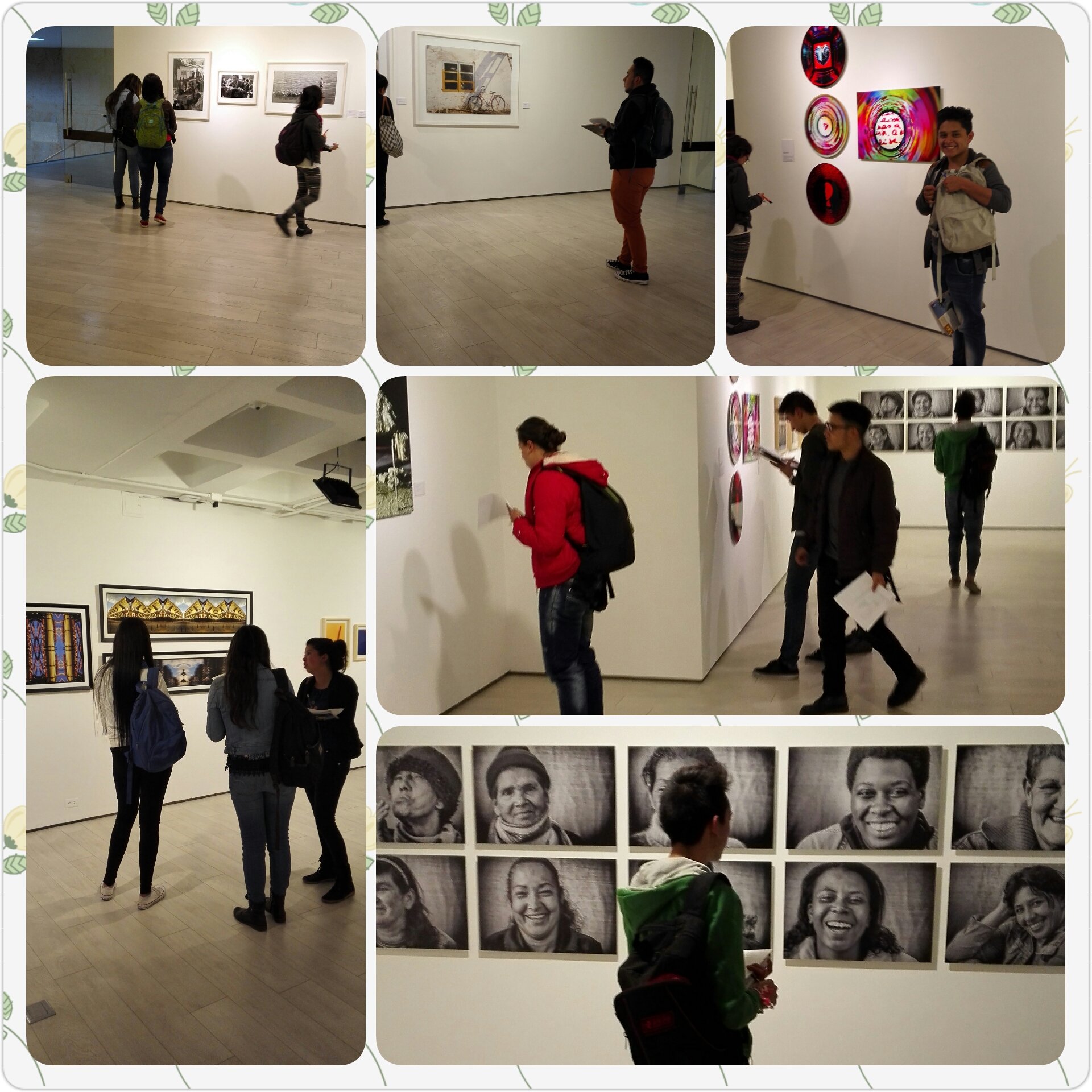Answering Bergmann and Sams' critical question when implementing flipped learning (2012) in EFL has brought me great discoveries and has given my students fabulous opportunities to live English as a foreign language and not just to study it. The question goes: what is the best use of my face-to-face time? Thinking of answers to this question in an EFL context is not easy, not because the answers are scarce, but because of the opposite reason, there are too many things one could be doing to make the best use of the "group learning space".
So, in order to optimize the time and space in my EFL course I decided to take explicit grammar instruction outside of the classroom by creating and assigning peer instruction videos to students (A post on this particular topic coming soon). In EFL contexts, time is usually spent going over grammar minutia leaving little room for language use and spontaneous production. So, what I did was to "get rid of" the grammar in the classroom and free up the space for experiential and active learning.
This semester, I have done several projects and activities in my English 3 class (an intermediate EFL course) to make the best possible use of the classroom time and to implement flipped learning and in-class flip purposefully. Some of these activities have been successful, others not so much. Below, I will describe some of my favorite tasks and I hope you can connect with these ideas and perhaps implement them in your EFL classrooms. If you do, don't doubt to leave a comment in the section below.
It is worth mentioning that at
Única, the teachers' college where I work, we use an EFL textbook (
Life 5 by Cengage Learning) as a guide in our EFL courses and that the topics we have studied have been connected to the thematic units in the book.
Unit two dealt with storytelling. The book invited students to think about different aspects of storytelling and to "write a story" as part of the unit's contents. The supporting grammar structure for this unit was a review of past tenses. However, I wanted to take the unit a bit further and added a task: creating a story on Storybird (thanks @martharamirezco for the suggestion).
In the interest of working in a flipped fashion, I had students read stories for homework to discuss their features in class. They did. We then worked on the grammar structure though a video and students started thinking about the topic they wanted for their story. We went to our computer lab to work on the pictures provided by Storybird. That's when we ran into our first roadblock. The internet connection was dreadful and students could not easily browse the site to find the images they wanted for their story. If you know storybird, you might be aware of the richness in imagery offered by this site. That's why I thought of working with the images first and then on building the story from the images chosen, but it didn't work quite well that day due to the internet glitches. Anyway, students prepared their story at home and posted them to our class website (Coursesites).
Even though students liked the task and came up with really nice stories, I felt the whole activity was an epic failure. However, after asking students what they have like most from the course, the vast majority have mentioned the use of technology, especially tools like Storybird. Funny thing.
Here you have a couple of samples of students' finished products (stories shared with permission from the students):
1.
A very tough life
2.
Where fear ends
3.
The tree of my life
Lessons learned
From this activity I learned a very important lesson about planning. I used to have much more technology where I worked before. My new workplace has limitations in connectivity, and that's okay (it is actually the situation in most of my country), so what I learned was to plan my computer lab time more thoroughly and never forget to have a plan B. I have to use that place for less connectivity demanding tasks like word processing. Also, I have learned to value what I'm doing since students like my work and that's all that matters after all.
2. Cyberbullying workshop
The second activity I have been able to do thanks to the newly acquired free time in the classroom is the Cyberbully movie workshop. Unit 3 in the book invited us to think about Science and Technology. I thought as part of this great unit I could have my students reflect abput this hard and dangerous topic. My students are still young (17-20 years old) so I thought they could really benefit from reflecting about this issue.
As we took direct grammar explanations outside of the classroom in my flip, we have more time for discussions, debates and even movie workshops. We watched the short movie Cyberbully (2015), and solved some listening comprehension and critical thinking questions I prepared for my students in a workshop. We discussed the topic and students even shared terrible stories they have lived because of an irresponsible use of social networks. The activity served the purpose of having students think about how responsible they need to be when making a comment, or sharing a photo via social networks. This far, students have assessed this workshop as one of the most interesting activities in the course.
Lessons learned
I had a great experience using this movie in class. I rarely did something like this because I thought movie watching in class was a waste of time. However, being able to stop the movie, talk about the plot as we went, comment on language use, and discussing the issue with my students made for a very productive class session. We would have not been able to make it if I had to explain grammar everyday in class as I had always done.
3. Street art
Unit 4 was about art, in general, but I emphasized on street art, hip-hop, rap, graffiti and related topics. My students live in backgrounds where walls are plagued with graffiti and murals, thus, this was a very meaningful topic for them. The class project was to create a street art video presentation. We had one class session for walking around the downtown area taking pictures of murals and graffiti on the walls. Students later used Power Point combined with Screencast-o-matic to create their videos and shared them with us in the class site.
What made this workshop flipped was that because of the freed class time and space we had, I had the opportunity of bringing a real muralist to our clas to talk to my students. Kaleto Taki, a local street artist came to my class to talk to my students about his painting techniques, his inspiration and the materials he uses.
We also had time to go to the
Centro Colombo Americano Art Gallery, where my students had the opportunity to see a local photographer exhibit (for many of my students, this was their first visit to an art gallery ever).
This unit was very rich and students liked it a lot! It gave them opportunities to use English in very different contexts to the regular classroom, and gave them the chance to express their feelings towards art and its representations.
Lessons learned
There's more than meets the eye. I learned how complex and rich my students' lives and contexts are and how much they have to bring to the classroom every day. They showed me their passions and what they are capable of when their likes, needs and realities are considered.
Here's a sample of their street art videos (the rest are to shy to share)....
In short, flipped learning has invited me to think about making the classes for my students more meaningful and rich every day. It is not only thinking about the videos that I will create or curate but about creating "fertile learning spaces" (Marshall, 2016) for them to flourish and exploit all of their learning potential!







